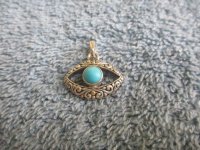Trez
Hero Member
- May 10, 2006
- 768
- 269
- Detector(s) used
- Sov Elite, CZ20, Minelab Sovereign XS, Explorer II, My eyeballs to bloody fingers have done me well also.
- Primary Interest:
- All Treasure Hunting
Very intersting piece you have found...
I know this probably won't be of total help, but here is a ship rigging link.
It's a good site, for someone wanting to know more about old sailing ships and rigging etc...
I hope your artifact puts you closer to finding some fantastic finds, Good diving Good hunting and good finding.
http://www.hnsa.org/doc/luce/part3.htm
Trez
I know this probably won't be of total help, but here is a ship rigging link.
It's a good site, for someone wanting to know more about old sailing ships and rigging etc...
I hope your artifact puts you closer to finding some fantastic finds, Good diving Good hunting and good finding.
http://www.hnsa.org/doc/luce/part3.htm
Trez


 All those crack-pot, arm
All those crack-pot, arm



